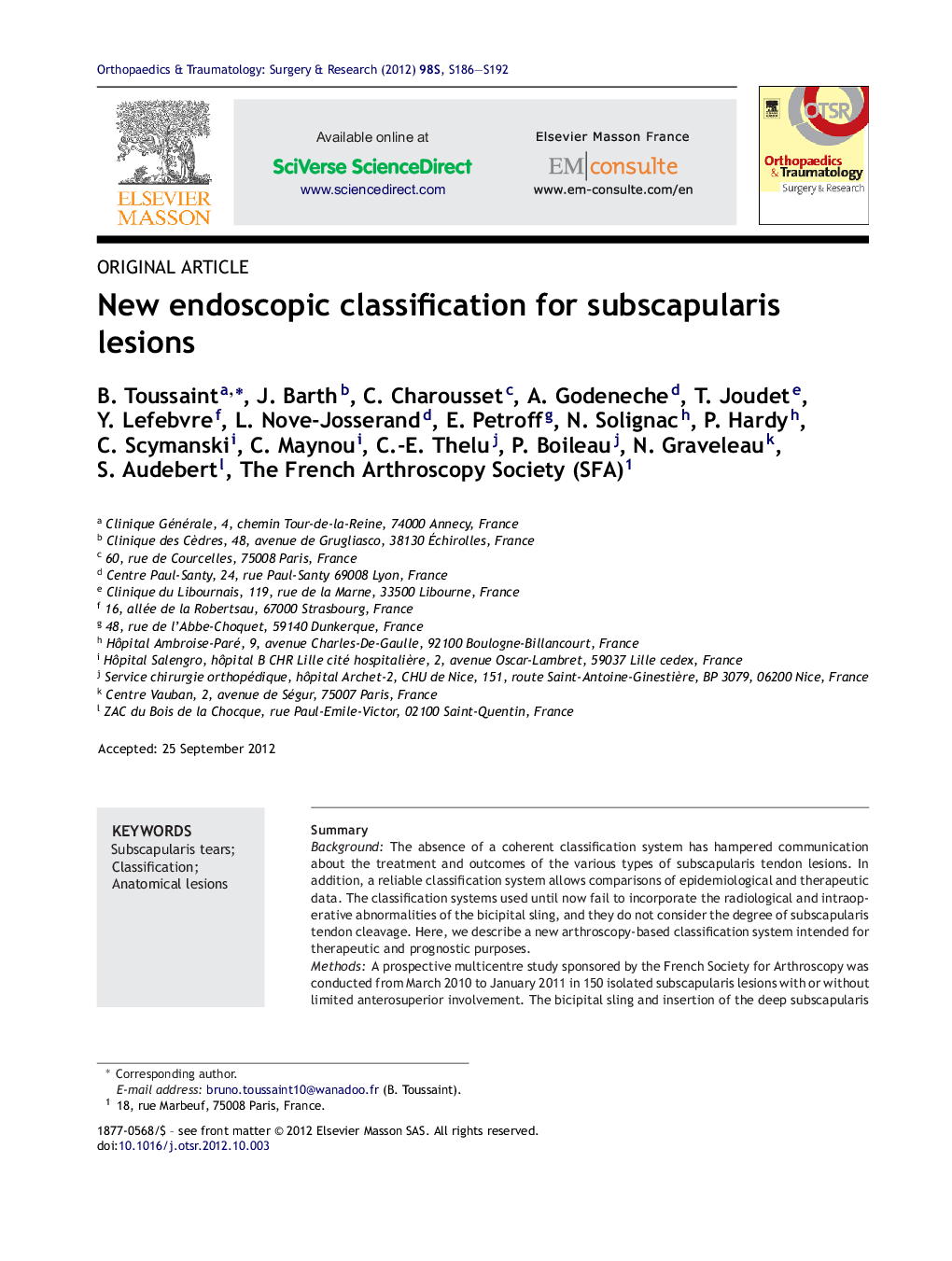| کد مقاله | کد نشریه | سال انتشار | مقاله انگلیسی | نسخه تمام متن |
|---|---|---|---|---|
| 4081533 | 1267596 | 2012 | 7 صفحه PDF | دانلود رایگان |

SummaryBackgroundThe absence of a coherent classification system has hampered communication about the treatment and outcomes of the various types of subscapularis tendon lesions. In addition, a reliable classification system allows comparisons of epidemiological and therapeutic data. The classification systems used until now fail to incorporate the radiological and intraoperative abnormalities of the bicipital sling, and they do not consider the degree of subscapularis tendon cleavage. Here, we describe a new arthroscopy-based classification system intended for therapeutic and prognostic purposes.MethodsA prospective multicentre study sponsored by the French Society for Arthroscopy was conducted from March 2010 to January 2011 in 150 isolated subscapularis lesions with or without limited anterosuperior involvement. The bicipital sling and insertion of the deep subscapularis layer were routinely investigated by arthroscopy with video recording. Each lesion was classified after a consensus was reached among four surgeons.ResultsWe identified four lesion types based on the bicipital sling findings. Type I was defined as partial separation of the subscapularis tendon fibres from the lesser tuberosity with a normal bicipital sling. Type II consisted of a partial subscapularis tear at the lesser tuberosity attachment combined with partial injury to the anterior wall of the bicipital sling, without injury to the superior glenohumeral ligament. Type III was complete separation of the subscapularis fibres from the lesser tuberosity with extensive cleavage of the bicipital sling. Finally, in Type IV, all the subscapularis fibres were detached and, in some cases, conjunction of the subscapularis and supraspinatus fibres produced the comma sign. Nearly all the lesions identified intraoperatively during the study fit one of these four types.DiscussionA reproducible classification system that allows different surgeons to establish comparable homogeneous patient groups is useful for both therapeutic and prognostic purposes. We defined four types of subscapularis lesions that are easy to identify as either isolated lesions or combined with anterosuperior rotator cuff tears. Long head of biceps tendon abnormalities and fatty degeneration of the shoulder muscles can be added to our classification system. Studies of intraobserver and interobserver reproducibility are needed to complete the process of validating the diagnostic and/or prognostic usefulness of this new classification scheme.Level of evidenceII.
Journal: Orthopaedics & Traumatology: Surgery & Research - Volume 98, Issue 8, Supplement, December 2012, Pages S186–S192